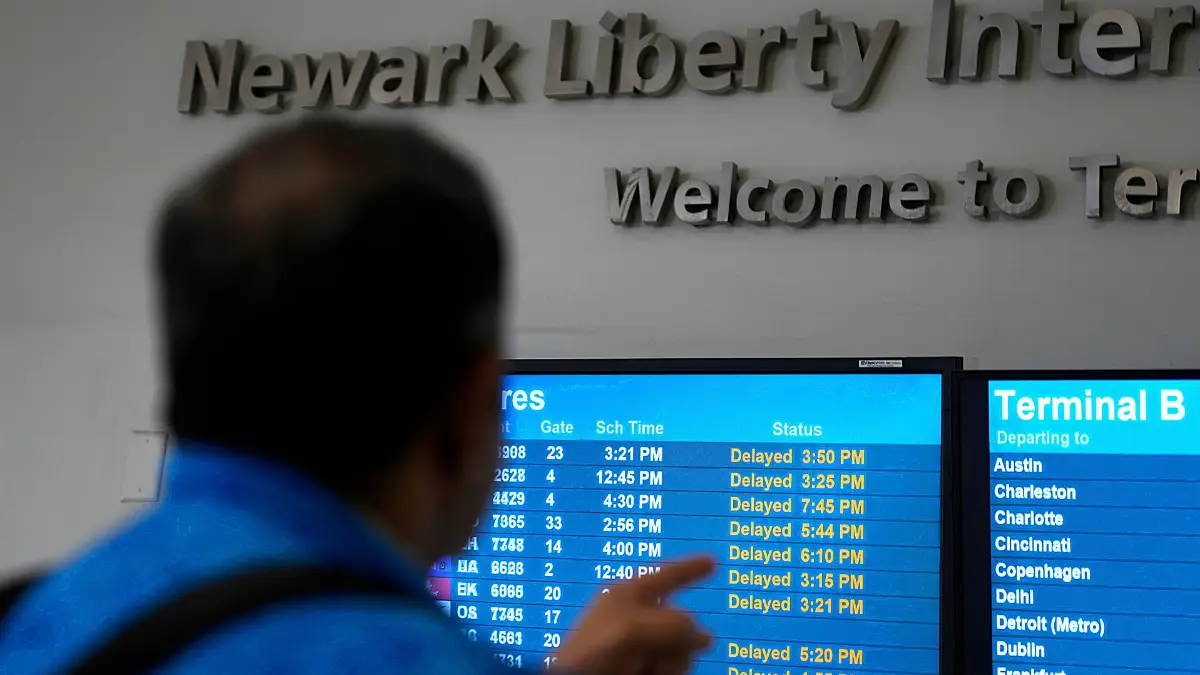
Aircraft and transport: FAA cuts flights at Newark to combat massive delays
Ongoing works, staff shortages, and technical problems push the authority to reduce traffic

Parallel to the reduction of flights, the authority is implementing a series of targeted measures to improve the reliability and redundancy of the national air traffic control system
The Federal Aviation Administration (FAA, the American authority overseeing civil aviation) has announced a provisional order that reduces the maximum number of arriving and departing flights at Newark-Liberty International Airport. The decision, which came into effect yesterday, May 20, 2025, aims to alleviate the significant disruptions experienced by travellers due to excessive delays attributed to ongoing construction, staffing shortages, and equipment issues.
According to the provisional order, the maximum hourly rate for air movements at Newark will be 28 arrivals and 28 departures until the completion of construction work on runway 4-left/22-right. These daily works are scheduled until June 15, but will continue on Saturdays until the end of the year. Outside the construction period, the limit will increase to 34 arrivals and departures until October 25.
Chris Rocheleau, Acting Administrator of the FAA, stated: "Our goal is to alleviate the substantial disruptions caused to travellers by excessive flight delays resulting from construction work, staffing problems, and recent equipment issues, which are amplified across the National Airspace System". The FAA announced it had discussed the plan with the affected air carriers in a delay reduction meeting held last week. The authority reserves the right to adjust these limits if it is determined that there is sufficient capacity to accommodate more flights without significantly increasing delays or if further reductions are necessary.
The decision was not unexpected but is the culmination of a prolonged period of operational challenges at Newark Liberty Airport. Passenger disruptions have been constant, with systemic delays and frequent cancellations undermining confidence in the national air system (see AVIONEWS). In recent months, the airport has faced an unfavorable conjunction of factors. Firstly, maintenance and modernization works on airport infrastructure —while necessary for the long term— have inevitably reduced operational capacity at times. Added to this are staffing problems, particularly the shortage of certified air traffic controllers, which has often forced a slowdown in operations to maintain safety. Lastly, malfunctions and equipment problems have further complicated air traffic management, amplifying the negative effects on an already strained capacity. These factors, acting synergistically, have created a domino effect of delays propagating not only within Newark but across the broader National Airspace System, making structural intervention such as that announced by the FAA urgent.
Alongside the reduction in flights, the authority is implementing a series of targeted measures to improve the reliability and redundancy of the air traffic control system: adding three new high-bandwidth telecommunication links between the New York Stars and the Philadelphia Tracon, ensuring greater speed, reliability, and redundancy; replacing copper telecommunication connections with upgraded fiber optic technology, offering greater bandwidth and speed; implementing a temporary backup system at the Philadelphia Tracon to guarantee redundancy during the transition to a more reliable fiber optic network; creating a Stars hub at the Philadelphia Tracon, making the facility independent from the New York Stars telecommunications hub; and increasing air traffic control personnel.
Philadelphia Tracon Area C, which manages aircraft inbound and outbound from Newark, currently has 22 fully certified air traffic controllers, 5 fully certified supervisors, and 21 controllers and supervisors in training. Of these trainees, ten are receiving on-the-job training and are already certified for at least one position, with three certified for multiple positions, capable of operating without supervision. The FAA has assured the presence of a solid "controller pool", with training courses scheduled through July 2026.
AVIONEWS - World Aeronautical Press Agency